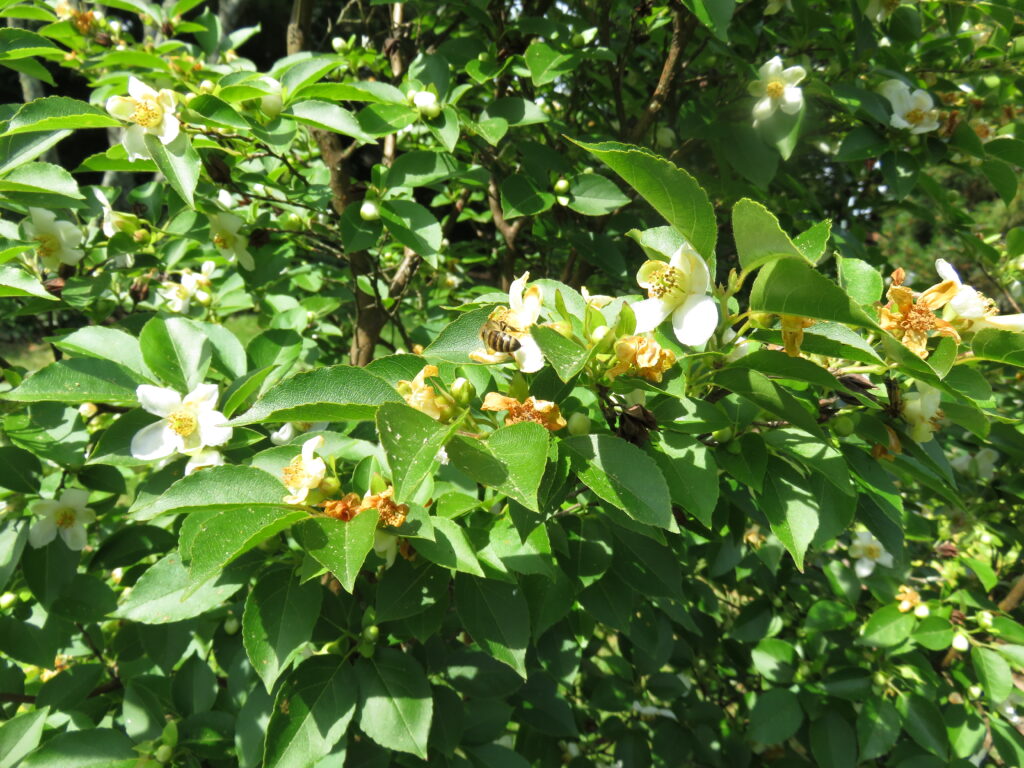Tall Stewartia (Stewartia monadelpha) is a deciduous flowering shrub or multi-trunked small tree that grows 20-25 feet tall with a pyramidal framework when young. As the tree ages, horizontal branches open up more. Tall Stewartia is a native of Japan and is indigenous to cool mountain forests. Stewartias are members of the Theaceae botanical family which include Camellia, Franklinia, et.al. (USDA hardiness zones 6b – 8b).

Low maintenance tall stewartia performs best in partial shade, preferably early morning to early afternoon. Either avoid hot mid-afternoon sun or routinely irrigate during spring/summer dry periods. Once established in 2 years, tall stewartia exhibits above average heat and drought tolerance. Site the tree in well-drained, humus-rich, acidic, loamy or sandy soils. Mulching with shredded pine bark is advised.
Tall Stewartia is identified by its smooth orange-bark which gets better and better as the tree ages. The main and scaffold bark chips off in thin exfoliating sheets. Small white camellia-like flowers appear in late spring in Tennessee. Its autumn scarlet red foliage is an added plus.
Dark green elliptic leaves, 1.5 to 3 inches long, have finely serrated margins and grayish-green beneath. Fall foliage is orangey-red to deep scarlet and intensity tends to be variable from one year to another. The white cupped-shaped flowers measure 1 to 1.5 inches wide and have yellow-orangish stamens. The five-segmented small oval hard fruits (capsules) ripen in the fall.
Tall stewartia is heat and drought tolerance make this plant an ideal small landscape tree in Mid-Atlantic and Mid-South states. Consider Tall Stewartia for a shrub border, patio area, accent, lawn specimen, or street tree.

Extra: Tall stewartia is available from on-line nursery sources. This fine landscape tree deserves more use in U.S. landscapes. It has no serious insect or disease issues. Pollinators enjoy our multi-year landscape tree in Northeast Tennessee. Methods of propagation include seeds or stem cuttings.

 Posted in
Posted in 
